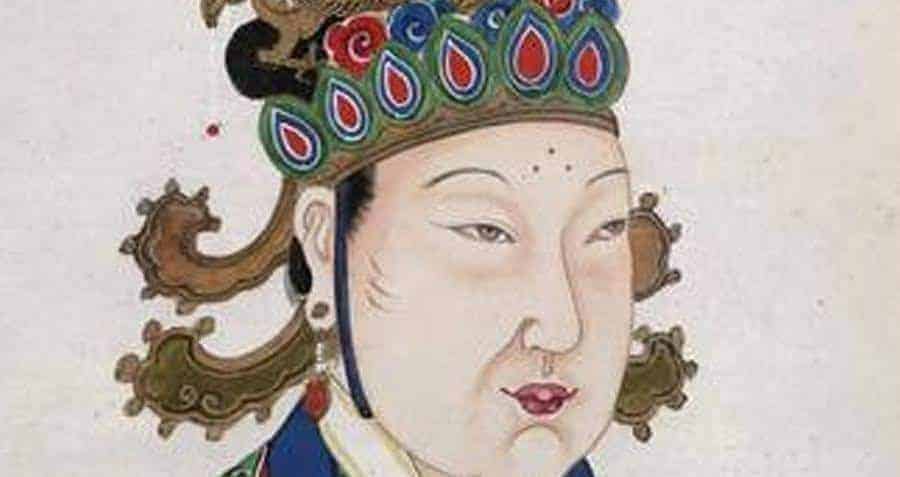Some of these queens were truly awful; others were skilled rulers and military leaders, perhaps viewed less favorably than is fair by history. Some, like Elizabeth I, are remembered more for their other achievements and less for either their bloody rule or their military might. You’ll likely be surprised by some of these names, and not at all by others, after all, Mary Tudor is most commonly called Bloody Mary.
These are only a few of history’s notable, and sometimes brutal, queens. Their reigns vary, as do their abilities as a queen and ruler. For this article, we’ve chosen a range of cultures and historical periods—it’s not conclusive, nor are these the only good examples.

Empress Wu Zetian
Empress Wu Zetian ruled China in 700 CE; she was the only woman to do so in her own right and her own name. She held power, through several avenues for more than 50 years. Over the course of her life, she was first the consort of the Gaozong Emperor, then held power as the mother of the emperor, and finally in her own name as Empress of China.
Chinese histories don’t look favorably on Wu. Not only was she female, she was a usurper without birthright to the imperial throne. She was accused of killing her sister and older brothers, murdering the Emperor and killing her own mother. It is even claimed that she smothered her own week-old daughter to blame one of the Emperor’s other wives. Which of these accusations are true, and which are not?
It is relatively likely that some of the accusations specific to Wu’s own family interactions were true, including, perhaps, murder. She certainly manipulated her own sons to eventually lead to the rule of the weak-tempered fourth son; the one she could easily control. Others, like her murder of Empress Wang and the Pure Concubine, do not appear in the contemporary reports, and are suspiciously similar to the records of other Chinese empresses, like the 2nd century BCE Lu Zhi.
While you might, at this point, think that Wu was, as Chinese historians remembered her, quite a dreadful woman, she was a fine ruler. She was, for her people, an effective and pragmatic ruler. Her policies were largely very much like those of her predecessors, and she played a key role in the longevity of the Tang dynasty.
Under Wu, China was peaceful and economically prosperous. She introduced a system of meritocracy for Chinese bureaucrats that lasted until the 20th century and welcomed ambassadors from distant countries, including the Byzantine Empire. She maintained policies of religious tolerance in her court and country. She was, however, most certainly guilty of maintaining her own harem of young men, just a Chinese emperor had a harem of young women.
Wu’s tomb remains unopened, but is unusual, with a shape reminiscent of a pair of breasts. Even in death, she was a bit uncommon and remarkable.
